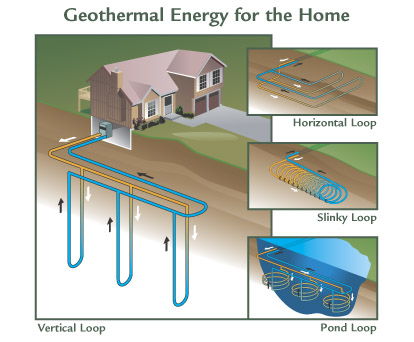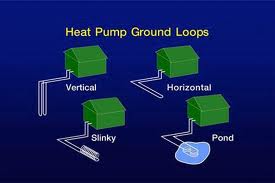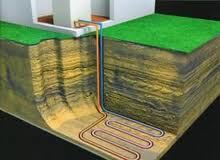Residential Geothermal Heating and Cooling
The cost and availability of our natural resources are two of today’s major concerns. From one year to the next, energy prices seem to be in a continual state of flux. What we pay for fuel seems to be completely out of control.
Oil and gas are nonrenewable resources. Once we consume them, they are gone…forever. Furthermore, as we use these resources, we must consider their impact on the environment both now and in the future.
One thing we can control however is our own demand for fuel needed to heat and cool our homes. The answer is right at our feet.
Ground Source Heating for your Home
Residential geothermal heating and cooling provides a solution to many of these concerns. The term geothermal means heat from the earth. Both near the surface and deep within the ground, our planet can provide a continuous source of heat and energy. However, we use the term geothermal to describe two entirely different forms of energy.
Geothermal energy refers to the use of heat within the core of the earth. Heat extracted from the magma far below the ground provides an environmentally friendly way to power the turbines of a power plant.
Residential geothermal heating and cooling describes the use of energy closer to the surface also called ground source energy. It relies on geothermal technology to provide a sustainable source of energy to heat and cool our homes. Geothermal heating and geothermal energy are proven technologies whose use continues to grow worldwide. In the long run, this use will lower dependence on fossil fuels and save us money.
 Geothermal Heating and Cooling Systems
Geothermal Heating and Cooling Systems
Over one million homes in the United States today use geothermal heating and cooling installations. In fact, the US Environmental Protection Agency considers geothermal heating and cooling the cleanest and most energy efficient system of conditioning any home.
Geothermal systems benefit from the earth’s ability to store solar energy. Mild heat exists in steady supply at depths ranging from six feet to a few hundred feet below the surface of the earth. A residential geothermal system efficiently uses this heat source to both heat and cool homes.
To create an even more energy efficient home, many homeowners include passive solar features within their living space as well!
Geothermal Heat Pump
The heat pump is a device which transfers heat from one source to another. In some systems this heat is created using water drawn from a nearby well. In other types, a fluid mix is circulated through shallow ground or a pond outside the house absorbing the mild temperatures from which heat can be extracted. During the warmer months, the heat pump reverses using water to transfer heat back into the ground to help with cooling. Because the heat pump transfers heat rather than creating it through combustion, efficiencies are much higher. Heat pumps are estimated to be four times more efficient than fuel burning furnaces, making them far less expensive to operate.
Geothermal Systems are Long Lasting
Geothermal heat pump systems are also a long lasting source of heating and cooling. Overall, the system contains far fewer moving parts than a conventional system. The average ground source heat pump will last approximately 25 years, twice the life expectancy of most fuel burning systems.
Two Types of Geothermal Heating and Cooling Systems
Closed Loop – With a closed loop geothermal system, a special type of antifreeze solution is pumped continuously through underground piping, absorbing mild temperatures from the earth or a pond and transferring it to the home. These loops of tubing can be run either horizontally at depths of six to eight feet or vertically to a depth of a few hundred feet using a geothermal well. The choice of using a horizontal or vertical system will depend on the availability of space and the cost of installation.
Open Loop – An open loop geothermal system uses water pumped through the system from a geothermal well. Heat is then extracted from the water before it is discharged back to the source. A consistant supply of good, quality water is most important to the open loop geothermal system.

